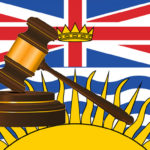Home »

Report sheds light on importance of lake foreshore conservation

The Kootenays may be world-renowned for mountains in the winter, but summertime is when lakes take centre stage. Paradoxically, the ever-growing popularity of Kootenay lakes is also driving growing concerns about their health and the sustainability of the aquatic ecosystems they support.
With this in mind, Living Lakes Canada undertook a four-year lake study from 2019-2023 to understand how lake foreshores in the B.C. Columbia Basin region are changing due to urbanization and development.
Using a lake survey methodology called Foreshore Integrated Management Planning, or FIMP, the project targeted Columbia Basin lakes with federally designated aquatic Species at Risk and 10 lakes were surveyed or re-surveyed. The Species at Risk populations that guided the project were Kootenay River White Sturgeon, Shorthead and Columbia Sculpin and Westslope Cutthroat Trout.

A new reader-friendly report about the project is now available that outlines the survey outcomes for each lake and lake-specific recommendations for protecting the at-risk fish populations found in each one. The 10 surveyed lakes are Kootenay, Slocan, Arrow and Trout lakes in the West Kootenays, and Whitetail, Whiteswan, Moyie, Windermere, Columbia, and St. Mary lakes in the East Kootenay.
“Freshwater biodiversity is declining rapidly on a global scale, and lake foreshores can provide habitat to roughly 90% of all lake biodiversity. Understanding the health of a lake’s foreshore and the rate of impacts is key to sustainable lake management,” said Georgia Peck, Lake Program Manager with Living Lakes Canada. “The FIMP work undertaken by Living Lakes Canada in the Columbia Basin is a testament to the value and effectiveness of FIMP as a powerful yet practical cumulative-impact assessment tool for freshwater conservation.”
The lake foreshore is the vital stretch along a lake between the low and high water marks, and a treasure trove of cultural, economic, and ecological value. However, negative impacts and changes to this crucial area can slowly accumulate over time, often going undetected. This is where FIMP comes in.

FIMP foreshore surveys are carried out by boat using GPS and drone assessment. Multiple observations are catalogued including land-use (industrial, residential, commercial), shore type (cliff/bluff, rocky shore, sand beach), foreshore condition, the number of docks, weirs or other man-made developments, wildlife, vegetation, and many others.
The findings are made publicly available and Foreshore Development Guidelines are produced for each surveyed lake as a resource that can be referenced by government, First Nations, stewardship groups, property owners, or anyone wishing to learn more about the quality of foreshore habitat and the risks posed by different shore-altering activities.
The recently released report, Foreshore Integrated Management Planning for Aquatic Species at Risk in the Upper Columbia Basin 2019-2023, offers a complete overview of the four-year Columbia Basin FIMP project on all 10 lakes, including foreshore impact trends, lake foreshore management issues, and recommendations resulting from the study.
Living Lakes Canada has begun expanding the FIMP program beyond the Columbia Basin, with surveys taking place on Nicola Lake (in south-central B.C.) and Fraser Lake (near Prince George) in 2023, and starting this summer for Douglas Lake in the Thompson Nicola Region, and Wood and Kalamalka Lakes in the Okanagan.
To read the report, visit www.livinglakescanada.ca/fimp. Questions about the Columbia Basin project can be directed to [email protected].
Lead image: Columbia Lake 2021 FIMP survey. Photo by WSP Canada
Photos submitted
Living Lakes Canada







